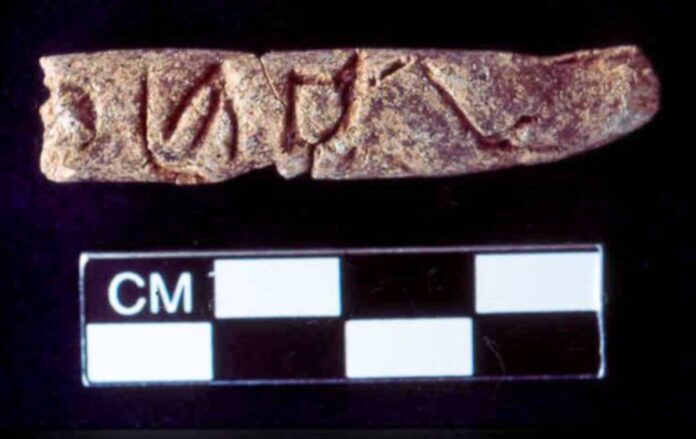The origins of alphabetic writing may have a longer history than previously thought. Recent evidence uncovered at the ancient site of Umm el-Marra in northwestern Syria suggests that the development of the alphabet may have started around 2300 BC – 500 years earlier than current theories suggest. This new theory, proposed by Johns Hopkins archaeologist Glenn Schwartz and presented at the annual meeting of the American Society of Overseas Research, has the potential to change our understanding of the origins of the alphabet.
Current Theory on Alphabet Origins
Until now, most scholars believed that the first alphabet emerged around 1800 BC in Egypt, where Semitic-speaking populations adapted parts of the Egyptian hieroglyphic system. These early forms of writing eventually evolved into the writing systems used in the Middle East and Western Europe.
However, the discovery of small clay cylinders by Schwartz and his team challenges this timeline and raises questions about where and why the alphabet was first created.
Schwartz and colleague at the Umm el-Marra excavations. (Courtesy of Matt Johnson/John Hopkins University)
A Groundbreaking Discovery at Umm el-Marra
During excavations in 2004 at Umm el-Marra, Schwartz’s team found four small cylindrical clay objects in a tomb dating back to the Early Bronze Age, as reported by John Hopkins University.
These finger-sized cylinders had inscriptions that resembled early alphabetic symbols and were found near pottery vessels in the tomb. Schwartz suggests that these objects might have been used as tags for identification or ownership, indicating their potential use in administrative tasks.
“Unlike the complex and elite-centric cuneiform or hieroglyphic systems, the alphabet allowed a wider range of people to record information and communicate,” explained Schwartz. This democratization of writing paved the way for the widespread use of written language in various aspects of society.
The importance of the site itself adds to the intrigue. Umm el-Marra, a medium-sized urban center during the Early Bronze Age, contained elite tombs filled with valuable items like jewelry and weapons. The preservation of the clay cylinders and other artifacts provides valuable insights into the technological and social advancements of the time.

One of the four small clay objects that appeared to contain alphabetic writing. (Courtesy of Glenn Schwartz/John Hopkins University)
Reevaluating the Origins of the Alphabet
The discovery of these clay cylinders, which predate the Egyptian-origin theory of the alphabet, has sparked debates among scholars. While there is skepticism surrounding Schwartz’s findings, experts like Alice Mandell and Christopher Rollston support the idea that these inscriptions represent an early form of alphabetic writing. Rollston described the discovery as a potential “game changer” with significant implications for ancient communication and cultural exchange in the Near East.
While radiocarbon dating confirms the age of the artifacts, deciphering their precise meaning remains a challenge. Schwartz believes that the symbols may indicate names or descriptions of goods, but further study is needed to understand the broader cultural significance of the inscriptions.
Implications for Early Writing History
If the Umm el-Marra cylinders are confirmed as the oldest alphabetic inscriptions, it could revolutionize our understanding of early communication technologies. Unlike previous writing systems that required extensive training and a large repertoire of symbols, the alphabet simplified the writing process. A limited set of characters could represent sounds, allowing for the creation of numerous words and ideas.
“Alphabetic writing marked a shift in how societies communicated and thought,” remarked Schwartz, as reported by La Brujula Verde. By making writing more accessible, it facilitated new forms of record-keeping and creative expression.
While further research is necessary to fully comprehend these inscriptions, Schwartz’s findings challenge established beliefs about the origins of the alphabet. Could the earliest alphabet have actually emerged in Syria or another location in the Near East, rather than Egypt? These implications expand beyond linguistics to offer insights into how ancient societies communicated, managed resources, and shaped their identities.
Top image: Clay object believed to contain early alphabetic writing. Source: Courtesy of Glenn Schwartz/John Hopkins University
By Gary Manners




